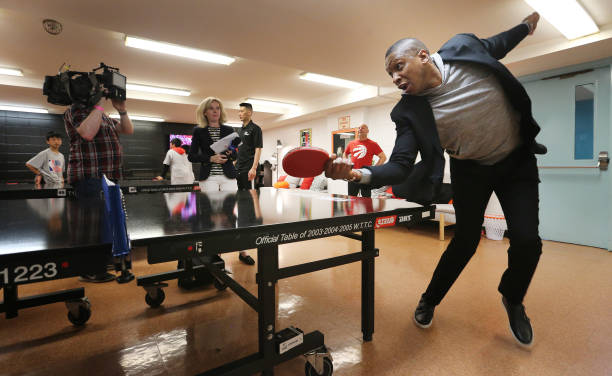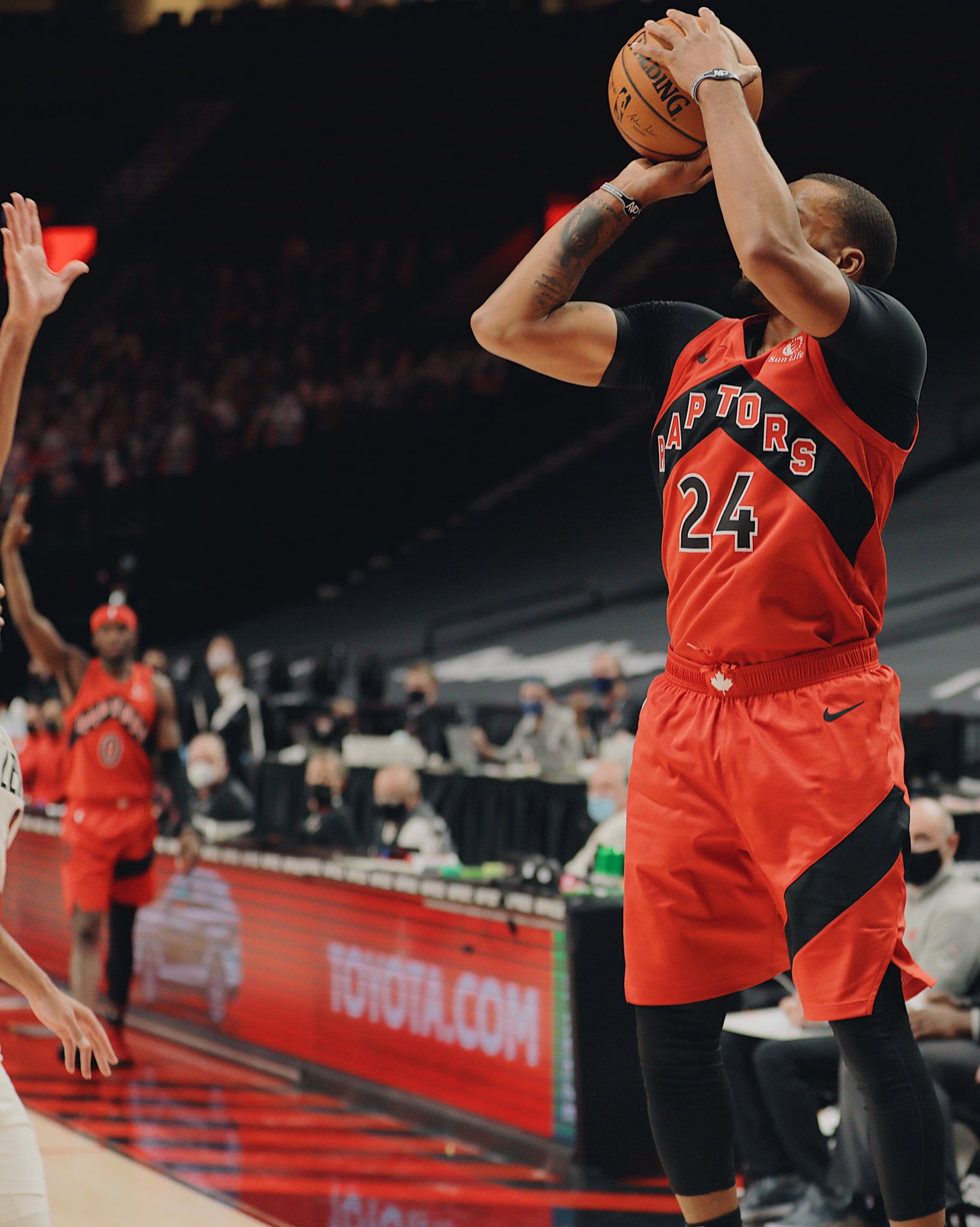Can Pascal Siakam become the Raptors’ late-game closer? – The Athletic
There is no question that an effective lead scorer is important. Whether Siakam can grow into a true No. 1 option and the centrepiece of an offensive system is the biggest question facing the franchise right now. That’s not necessarily the same thing as a closer, though, which is purported to be an elite class of bucket-getters rather than just the best all-around players.
Siakam has struggled in the most clutch of situations so far this year. In 20 minutes with a game within five points in the final five minutes, he’s shot 2-for-10 with a pair of free throws and two assists to two turnovers. The Raptors have struggled in those minutes, magnifying the preseason concerns with their half court offence.
That’s a very small sample. Expanding it offers little clarity. Last year, Siakam was quietly one of the league’s more efficient high-volume clutch scorers, posting a 63.3 percent true-shooting mark on 32.9 percent usage, both way above the league average in any situation, let alone in the toughest scenarios in basketball to score. The playoffs were unkind to Siakam, especially in the clutch.
There are a few issues with measuring how a player performs in the clutch. The biggest ones are cognitive biases. The entire history of NBA clutch situations is far too much for our brains to sort through, so we remember the initial impression, the most recent example or maybe the highest-profile instance. Vince Carter missing a game-winner against Philadelphia. Kyle Lowry’s shot against Brooklyn being blocked after a botched inbound play. Kawhi Leonard’s walk-off rattling in after four bounces. Cory Joseph knocking down the corner 3 off the hammer action. (They’re not all created equal.)
More practically, the two biggest issues with clutch evaluation are small samples and more difficult samples. Siakam’s sample this year is 10 shots — of the more than 3,500 he’s taken in the NBA. Do they tell us more because they were in bigger spots, against more dialed in defences and in recent games? Maybe a bit, but certainly not enough to outweigh a more holistic evaluation of a player’s ability. It’s important to keep in mind that most players struggle to score in the clutch, even the very good ones.
Analysis: Why going small doesn’t solve it all for the Toronto Raptors – Raptors HQ
The first problem lies in the sustainability of going small. Although the marquee small ball centres — Draymond Green, PJ Tucker — have downplayed the wear and tear that comes with shifting up a position, one look at Toronto’s de facto five, the stick-thin Chris Boucher, shows how he differs from those guys. They make up for their lack of height with girth, strength, and a low center of gravity. Boucher does not possess that might and can take a beating from some of the more powerful centres in the NBA.
This would also mean a significant jump in minutes for Boucher. Prior to the Sacramento game, he averaged 19.5 minutes. Since then, his minutes have jumped to 28.4 per game. With the way he has played thus far, he has certainly earned it, but a significant part of his effectiveness is the way he flies around the court like a pinball ricocheting off supercharged bumpers. With more minutes, particularly gruelling minutes, it will be tough for him to sustain that activity. It can also create foul trouble for a player not used to playing so many minutes, as it did against Golden State.
Shifting guys up a position will also create ripple effects, affecting other guys on the team. Sometimes, OG Anunoby will be asked to bang with a big. Considering he has great defensive instincts and is as strong as fortified steel, he can effectively do so. The problem is that it moves the team’s best wing defender off of the perimeter. Additionally, players like Norman Powell, for example, will have to shift up a position more frequently to small forward when he is traditionally a guard.
These are not enormous issues. The Raptors’ core guys are versatile, but if you have a border collie, it’s best used to herd sheep. Sure, you could probably make a decent guard dog out of it if you train it up right, but you will not be getting the maximum utility from it.
Speaking of versatility, although it is the malleability of the core players like OG Anunoby, Pascal Siakam, and Kyle Lowry that allows the team to play small, their lack of a reliable big man sees them lose some team-wide versatility. Over the past two seasons, the Raptors’ chameleonic nature was key to their success.
Marc Gasol was always ready for an intense matchup with an opposing big. Serge Ibaka offered a sleeker, faster look. There were also the break-in-case-of emergency options in the OG-at-centre lineup, or the double big look with both Gasol and Ibaka. This season, if Nurse busted out a Baynes-Len lineup, I would take it as a sign that he is taking his first steps away from coaching so he can start playing acoustic sets in smoky bars for a living.
Without reliable centre play, they lose a huge element of that lineup flexibility. In addition, Gasol and Ibaka were also excellent screen-setters; though Boucher and Kyle Lowry are developing an effective pick-and-roll combo, Boucher isn’t a brick-wall screener that opens up the floor.
Although small lineups will often force opposing teams to adjust, sometimes a matchup will just dictate a necessity for size. Experimenting with lineups is all about trying to tip a matchup in your favour, but without a traditional big who inspires confidence, it is like entering into an arms race on a budget.
Raptors Chris Boucher is only getting started | Toronto Sun
Boucher may not have started to date but he’s easily been the busiest and most effective centre on the roster. He’s averaging just over 22 minutes a night and contributing in every area with 14.3 points, 6.2 rebounds and a team best and tied for second best in the NBA 2.6 blocks a game.
Nurse, who has been switching up the starting five on a nightly basis lately in search of the best possible group has no complaints with what he has got from Boucher to date.
“He’s obviously played very well, which is why he started the second half the other day (in Portland), played a 14-minute straight run off the bench in the first half,” Nurse said. “He’s virtually playing starter minutes off the bench so, again, it’s kinda like you get your chance, you make the most of it, that chance gets lengthened is the way we like to usually do things with guys off the bench. But just opportunity, gaining more court time and gaining more experience with every rep up and down the floor.”
Boucher worked on his body extensively during the break between the shutdown of the NBA last March and the resumption in the Bubble in Orlando in July adding somewhere between 12 and 15 pounds of bulk.
But as his long-time trainer and conditioner and workout partner Ibrahim Appiah says, the goal isn’t as much about bulk as it is adding strength.
Appiah, who met Boucher when he was brought to his basketball Academy in Alma, Quebec (since moved to Thetford) some nine years ago, has been with him ever since and has heard all the criticisms of Boucher’s slight frame. Boucher stretches 200 pounds over his 6-foot-10 frame and while it can make for some real mismatches when he comes up against some of the heavier centres in the league, Appiah has no concerns about his man winning that battle over the length of a game.
“You can’t hit what you can’t catch,” Appiah says of Boucher.
Nurse certainly is not alone among coaches in being a bit lax every now and then with rules regarding masks. No coach has been 100 per cent compliant — none is likely to be even under the threat of escalating fines or warnings — but as the number of positive tests soars and teams lose players almost daily to either contact tracing or the virus itself, more diligence is needed.
“We all are OK (following the rules) or at least trying to do them to the best of our ability; it isn’t always easy,” Nurse said.
The NBA tightened the rules this week as part of new health and safety protocols aimed at stemming the tide of COVID-19 cases that are wreaking havoc with teams right now.
Coaches must wear masks for the entire game. Players must wear masks on the bench before they enter a game and put them back on — after a suitable cool-down period — when they are subbed out. There are new rules on social distancing in the pre-game period, as well as post-game contact between opponents and new limits on how, and when, teams can conduct full meetings and film sessions.
For at least two weeks, players are basically being locked down at home and on the road: limited to their hotel rooms for away games (except for team meetings, games or emergencies) and to their residences and arenas for home games. They are relatively drastic measures, but deemed necessary by the league in agreement with the players association.
“It does feel like it’s getting a bit much from that standpoint, trying to plug holes in a sinking boat,” Toronto’s Fred VanVleet said. “Hopefully we can get past a rough patch here.
Raptors support tightened NBA COVID-19 protocols – Video – TSN
After the NBA tightened COVID-19 protocols to try to save the season, the Raptors say that they are all human, and they have no choice but to support the stricter rules and to try and make the best of the situation.
Did I miss something, or fucking…like…do you have something that will help us through these dark times? Just want to talk Raptors? Holla: rapsfan@raptorsrepublic.com



